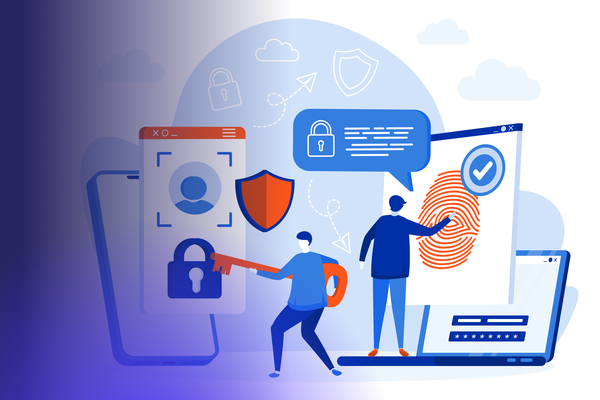Biometric Authentication: Building Trust in the Digital World
Biometric authentication provides increased security by identifying a person’s unique characteristics. It is fully addressed in this article.
Biometric authentication verifies customer identity by recognizing biological traits like voices, faces, fingerprints, retinas etc. The biometric identification system stores the user’s information and uses it to validate identity when someone tries to access the account. By doing this, the risk of identity theft and account takeovers are mitigated and avoided. The system requests identification documentation during the customer’s onboarding. So, using this method, an actual user can open an account using fingerprint or face recognition. Biometric verification is more efficient and secure than other verification methods.
How Does Biometric Authentication Work?
The biometric authentication system contains only one dataset collected from customers by the system provider. When the user tries to access the system, the machine validates the biometric information with the dataset in real-time to identify the person.
The system requires the data to be nearly identical, not precisely similar. However, it’s important to note that biometric ID data cannot be 100% comparable, the change can occur due to a sweaty finger, or an improper scan of the finger
Types of Biometric Authentication
Here are some of the various biometric user authentication methods to fight against criminals:
Facial Recognition
To confirm a user’s identity, this method scans distinctive facial traits. Law enforcement, credit card transactions, and smartphones rely on this secure method.
Fingerprint Recognition
This system requires the user’s unique fingerprint for verification. It is used to secure mobiles, buildings, automobiles, and doors. It’s reliable and widely used.
Eye Recognition
This type of biometric authentication is less common because it requires high accuracy and is not easy to implement. This type of authentication identifies a person’s retinas or iris to verify the user and give them access. Eye recognition is commonly used in sensitive areas, such as nuclear research centres, where security is critical.
Voice Recognition
This authentication is linked to a person’s tone, pitch, and frequency. This is the most commonly used biometric authentication method.
Vein Recognition
It is a technology that uses the unique pattern of the veins of a person’s hand or finger for authentication purposes. These patterns are stable over time. But this biometric authentication type is more accurate than the iris/retinas authentication. A vein’s geometry will light up in near-infrared light, which makes your veins visible in pictures.
Multimodal Biometric Authentication
Unimodal biometric authentication uses one specific feature to identify, such as an eye, face, etc., but multimodal authentication contains several steps in identity verification. Multimodal authentication is more secure than unimodal authentication.
For example, if a hacker gets a photo of a person from any social platform and tries to access the system with this photo in case of facial recognition, the system will take it as an original ID, and the user’s account can be hacked. However, fingerprint recognition can be used as a second step if a system calls for multimodal authentication. Therefore, the possibility of an account takeover is lower.
By combining physical and behavioral authentication, a user can improve security. The system will detect and deny the request if there’s any behavior change.
Benefits Of Biometric Authentication
There are many benefits to biometric authentication from the user’s perspective. Some of these benefits are listed below:
Ease of Use
Fingerprint and face recognition are easier to use than entering a long password. The system will detect these features in seconds and give access to the user. This way, it saves time and speeds up the verification process.
Fraud Detection
The biometric characteristics are challenging to copy or steal. The probability of a user’s fingerprint matching another user’s is 1% or less. Hackers consider it challenging to access accounts that use biometric authentication.
Enhance Security
Because biometric traits like fingerprints, facial features, iris, or voice are specific to the individual and cannot be stolen or replicated, they offer stronger security than traditional methods like passwords, pins, etc.
Disadvantages of Biometric Authentication
Although biometric authentication offers numerous benefits, it also has certain drawbacks. Some of them are listed below:
The User Can’t Process Remotely
The biggest drawback is that remote processing is not possible. In the same way as with conventional verification methods, if a user loses access to their email or password, they can still access their accounts and add two-factor authentication to increase security further. During biometric authentication, the user must be physically present near the device to unlock the system or protect the data set.
Data storage
The servers or local folders that contain biometric data should be secured with advanced encryption. Because if the biometric data is hacked, there is nothing a user can do to save the data.
Conclusion
Biometric authentication involves unique features associated with each person, so it’s difficult to hack the system secured with biometric authentication because biometric features are difficult to steal or replicate. But it provides more security than traditional authentication methods.






